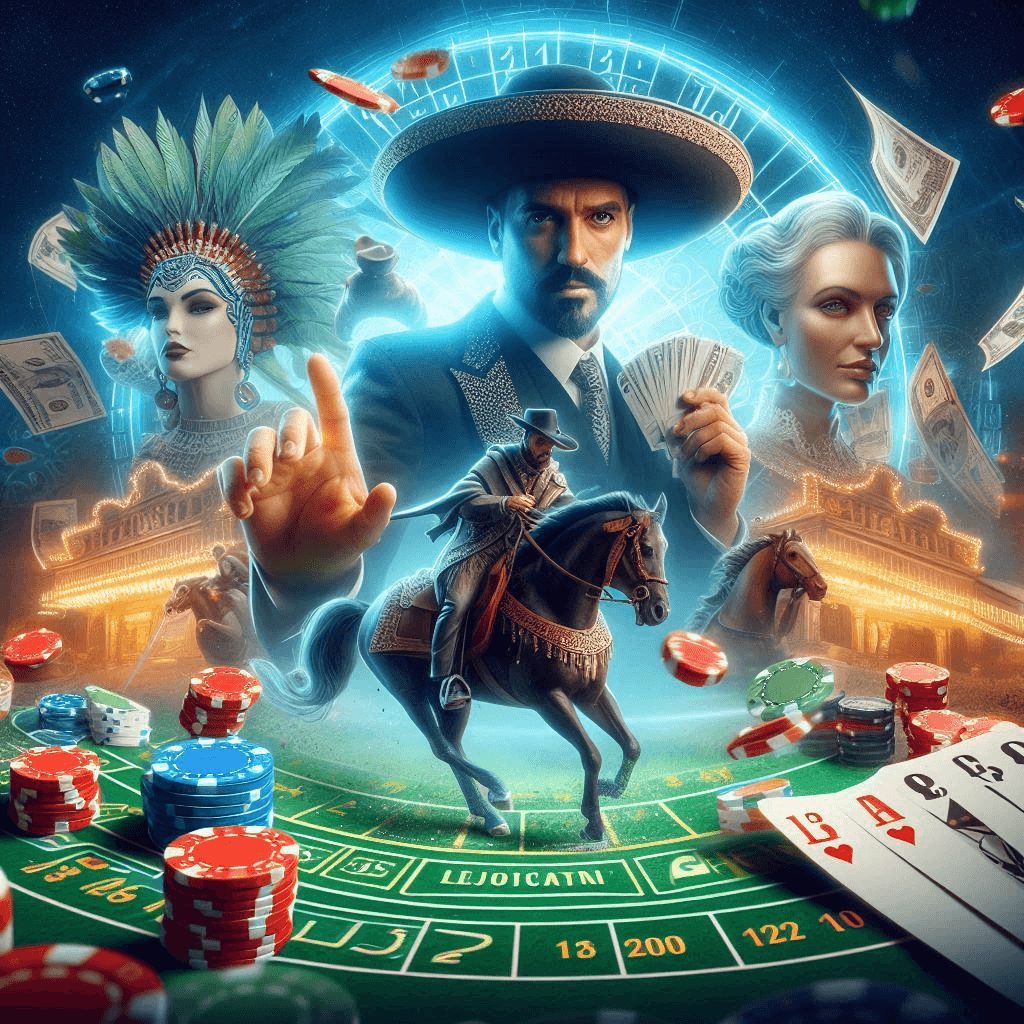In the vibrant world of casino gaming, few games capture the imagination and intrigue of players quite like Spanish 21. With its unique rules, strategic depth, and potential for substantial payouts, this variant of blackjack has carved out a devoted following among seasoned gamblers and thrill-seekers alike.
As the name suggests, Spanish 21 originated in Spain, but its popularity has since spread across the globe, captivating audiences with its enticing blend of risk and reward. In this comprehensive article, we’ll delve into the intricacies of games, exploring the game’s history, rules, strategies, and the potential rewards that await those who dare to play.
The Origins and Evolution of Spanish 21
The roots of games can be traced back to the late 20th century, when it emerged as a variation of the classic game of blackjack. Unlike traditional blackjack, games introduced a number of distinct rules and features that set it apart from its predecessor.
One of the most notable differences is the absence of the 10-valued cards in the standard deck. In Spanish 21, the deck is composed of 48 cards, with the 10s removed, leaving only the Ace, 2 through 9, and the face cards (Jack, Queen, and King). This seemingly minor change has a significant impact on the game’s dynamics and optimal strategy.
As games gained popularity, it also began to incorporate additional rules and variations that further distinguished it from traditional blackjack. Some of these include the ability to double down on any number of cards, the option to “double for less,” and the introduction of lucrative bonus payouts for certain hands, such as a five-card 21 or a 6-7-8 hand of mixed suits.
Understanding the Rules of Spanish 21
To fully appreciate the excitement and challenges of Spanish 21, it’s important to understand the game’s unique set of rules. While the basic premise of the game remains the same as blackjack – to beat the dealer’s hand without exceeding 21 – the specific rules and gameplay mechanics of Spanish 21 create a distinct experience for players.
The Deck and Card Values
As mentioned earlier, the games deck is composed of 48 cards, with the 10s removed. This means that the highest-valued card in the deck is the King, with a value of 10. The remaining face cards (Jack and Queen) also have a value of 10, while the Aces can be counted as either 1 or 11, depending on the player’s preference.


Betting and Payouts
In game, the betting process is similar to traditional blackjack, with players placing their wagers before the cards are dealt. However, Spanish 21 introduces some unique betting options, such as the “Double Down” and “Double for Less” features.
The standard payout for a winning hand in Spanish 21 is 3:2, just like in blackjack. However, the game also offers a range of bonus payouts for specific hand combinations, with some hands paying as much as 2:1 or even 3:1.
Player Decisions and Actions
During the course of the game, players in Spanish 21 have access to a variety of actions, including the standard “Hit,” “Stand,” “Double Down,” and “Split” options. Additionally, the game introduces the “Double for Less” feature, which allows players to double their bet for a reduced amount, typically half the original wager.
One of the most intriguing aspects of game is the ability to “Double Down” on any number of cards, regardless of the hand’s total value. This strategic flexibility can be a game-changer, as it allows players to capitalize on favorable situations and potentially increase their winnings.
Strategies and Tactics for Mastering Spanish 21
Mastering game requires a deep understanding of the game’s unique rules and an ability to make informed, strategic decisions. While the core principles of blackjack still apply, the specific nuances of game demand a tailored approach to gameplay.
Card Counting and Probability
One of the key strategies in Spanish 21 is card counting, a technique that involves keeping track of the cards that have been dealt and using that information to make more informed decisions. Because the 10s are removed from the deck, the card counting process in Spanish 21 is slightly different from traditional blackjack, but the underlying principles remain the same.
By understanding the probability of certain card combinations and the impact of the missing 10s, players can gain a valuable edge in the game, allowing them to make more calculated bets and maximize their chances of success.
Optimal Betting Strategies
In addition to card counting, Spanish 21 players must also master the art of optimal betting strategies. This includes understanding when to take advantage of the game’s unique features, such as the “Double Down” and “Double for Less” options, as well as recognizing the most profitable bonus payouts.
By carefully analyzing the odds and potential payouts, players can develop a betting strategy that aligns with their risk tolerance and financial goals, allowing them to navigate the game’s excitement and challenges with greater confidence.
Bankroll Management and Risk Mitigation
Successful Spanish 21 play also requires a disciplined approach to bankroll management and risk mitigation. Given the game’s potential for high payouts, it’s essential for players to manage their bankroll effectively, setting appropriate bet sizes and adhering to a responsible gaming mindset.
Strategies such as identifying and adhering to loss limits, diversifying bets across multiple hands, and maintaining a long-term perspective can help players navigate the ups and downs of Spanish 21 and ensure a more sustainable and enjoyable gaming experience.
The Thrill and Potential Rewards of Spanish 21
One of the primary draws of Spanish 21 is the potential for substantial payouts. With the game’s unique rules and bonus features, players have the opportunity to win big, with some hands offering payouts of 2:1 or even 3:1.
The excitement of chasing these lucrative payouts is a significant part of the appeal of Spanish 21. The game’s strategic depth and the ability to make meaningful decisions that can directly impact the outcome of a hand add an adrenaline-fueled element to the gameplay.
However, it’s important to note that the potential for substantial rewards in Spanish 21 also comes with a heightened level of risk. The game’s unique rules and the absence of the 10-valued cards can create situations where the house edge is more pronounced, particularly for inexperienced players.
Conclusion
Spanish 21 is a captivating and complex game that offers a unique blend of strategic depth, thrilling gameplay, and the potential for significant rewards. By understanding the game’s origins, rules, and optimal strategies, players can unlock the full excitement and rewards that this variant of blackjack has to offer.
Whether you’re a seasoned casino-goer or a newcomer to the world of gambling, Spanish 21 presents an opportunity to challenge your skills, test your luck, and potentially walk away with life-changing payouts. So, if you’re ready to take on the risks and embrace the rewards, step up to the Spanish 21 table and get ready for an unforgettable gaming experience.
FAQs
-
What is the main difference between Spanish 21 and traditional blackjack?
The primary difference between Spanish 21 and traditional blackjack is the absence of the 10-valued cards in the Spanish 21 deck. Instead of the standard 52-card deck used in blackjack, Spanish 21 is played with a 48-card deck, where the 10s have been removed.
-
What are the unique betting options in Spanish 21?
Spanish 21 introduces several unique betting options, including the “Double Down” feature, which allows players to double their bet on any number of cards, and the “Double for Less” option, which enables players to double their bet for a reduced amount.
-
How do the bonus payouts work in Spanish 21?
In addition to the standard 3:2 payout for a winning hand, Spanish 21 offers a range of bonus payouts for specific hand combinations. These bonus payouts can be as high as 2:1 or even 3:1, making certain hands extremely lucrative for players.
-
Is card counting an effective strategy in Spanish 21?
Yes, card counting can be an effective strategy in Spanish 21, although the process is slightly different from traditional blackjack due to the absence of the 10-valued cards. By keeping track of the remaining cards and understanding the probability of certain card combinations, players can gain a valuable edge in the game.
-
What are the risks associated with playing Spanish 21?
While the potential rewards in Spanish 21 can be substantial, the game also carries a heightened level of risk. The unique rules and the absence of the 10-valued cards can create situations where the house edge is more pronounced, especially for inexperienced players. Proper bankroll management and a disciplined approach to gameplay are essential to mitigate these risks.
